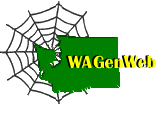Pioneer life in the Benton Co. WA area
Literary Club was Popular/Program Topped by Debates
By BURTON 0. LUM
Tri-City Pioneer
Tri-City Herald, Sunday, February 5, 1961, page 28
Since the erection of the new school house, the people of Kennewick had been considering the formation of a club that would meet every Saturday night in the school house. The purpose of the club was to get acquainted, consider problems of mutual interest, and for entertainment. Captain Lum, clerk of the school board, was prevailed upon to call a meeting at the Kennewick school house to form such an organization. Lum placed notices of the meeting on the school house door and in the post office. There were no telephones in the Tri-City region in these early days. Notices, letters and word-of-mouth were the only means of contacting the people.
The meeting was well attended. The ladies brought box lunches. Tea and coffee was brewed on the big bellied heating stove. Will Sonderman was unanimously chosen temporary chairman. Various committee reports were heard, discussed and acted upon. The constitution and by-law committee report was adopted without dissent. There was a great difference choosing a name. Many favored “The Kennewick Literary and Debating Club”. The committee on names had studied the huge Websters Unabridged Dictionary that the school had just purchased. In it they found that lyceum meant an association providing inspirational lectures, concerts, and entertainments. After much discussion the different factions compromised on “The Kennewick Literary and Lyceum Club” and the shades of Aristotle had won.
Nominations for permanent officers were made to be voted upon at the next Saturday meeting. At this meeting Will Sonderman was elected president, Capt. Lum, vice president; Daisy Beach, secretary; Lila White, treasurer, and Jim Dodson, sergeant-at-arms. Kennewick now had an organization that could function in almost any capacity that was needed, social, civic, educational or recreational.
The school house was the only meeting place. A brief description of the school room is as follows: The benches and desks were permanently fastened to the floor. They faced the rear of the room. a low platform or dias was built across the rear on which the teacher’s desk was located and on which the classed recited. Aisles extended along each side wall also in front and down the center of the room. A large, big-bellied heating stove, fuel box, and wash stand, water bucket and space to hang wraps occupied one side wall aisle. There was a front door with a window on each side. The two side walls each had two windows. There were no windows in the rear wall. Because of these existing physical features, there was not sufficient space for either round or square dancing. The raised recitation platform in the rear was used as a stage. A draw curtain had been installed in lieu of a rolling stage curtain.
The numbers on the programs were varied, being orations, debates, charades, dramatic skits, dances, songs and instrumental renditions. The highlight of the weekly program was the debate. The program committee would never give an advance notice of the question to be discussed. The speeches were always extemporaneous. The president would appoint two leaders who would select their teams of five on a side from the audience. The decision of the debate was determined by the amount of applause the audience gave to each team, “Whether the pen was mightier than the sword” was decided for all time to come. “Should the women have the right to vote?” This was a warm issue. Five young ladies took the affirmative and five country swains the negative.
I shall never forget the country swain who was stricken with stage fright. With ashen face and staring eyes he gazed at a spot in the ceiling, repeating over and over (like a cracked phonograph record) “A woman should stay at home and sew buttons on a man’s pants and one thing and another, and one thing and another.” The expression on his face and the monotony of his voice hit the funny bone of the audience and they roared. President Sonderman came to his aid by saying, “Well Bill don’t you think you have enough buttons sewn on those pants?” Bill came out of his trance and with a blush on his face, sheepishly replied “yep” and returned to his seat amid yells and applause from the audience, which won the decision for his side. What is this cussed feeling of mirth that most of us feel when we behold someone in an unfortunate predicament: Why do we smile or laugh when we should render aid and sympathy?
Return to Index of Burton Lum Articles

